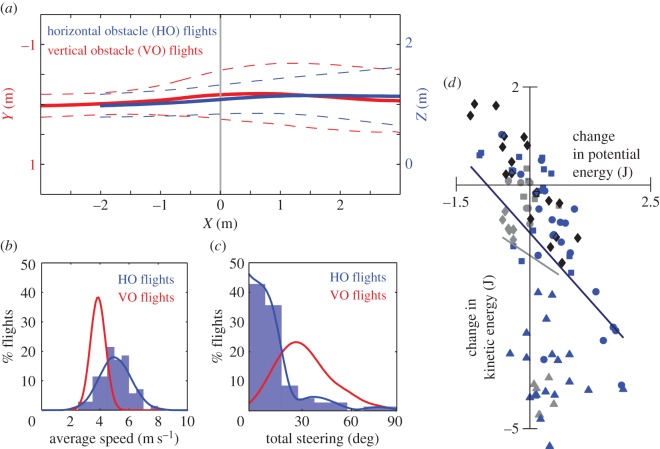Figure 2.
Pigeons trade off potential and kinetic energy, but fly faster and steer less past horizontal obstacles (HOs) compared with vertical obstacle (VO) flights. (a) HO flights (blue) involved less steering in the XZ plane compared with VO flight navigation (red) in the XY plane (VO data originally reported in [34]). Overall, the mean trajectory for each set of obstacle flights matched the destination direction of the landing perch. As for VO flights, HO flights showed little evidence of path planning during the approach, with little or no evidence of steering until within 0.5–1.5 m of the obstacle field (dashed lines are s.d. of pooled traces). (b) Pigeons slowed down but flew past the HOs at a more variable and higher speed (5.0 ± 1.0 m s−1) compared with VO flight speeds (3.9 ± 0.5 m s−1). (c) Overall steering was also more variable as well as being lower in magnitude during HO flights compared with VO flights. For example, more than 40% of HO flights involved less than 10° of total steering. (d) Changes in potential energy (PE) relative to kinetic energy (KE) over flight sections within the HO forest were generally exchanged to conserve the pigeon's mechanical energy state (each shade of blue and symbol represents an individual; multiple LS-regressions model: p < 0.0001). No such trend was present for NO flights (grey symbols; p = 0.06). In the HO forest, however, PE changes were generally small and failed to show a bias for increased PE with decreased KE, indicating that in some trials the pigeons also steered down and increased flight speed in the forest.

